Phoenix Pix: August 3-7, 2009

Studying in the Law School.
Photo by Steven Crane.
Submit your best University of Chicago-themed photos to Phoenix Pix.
« July 2009 | Main | September 2009 »

Studying in the Law School.
Photo by Steven Crane.
Submit your best University of Chicago-themed photos to Phoenix Pix.
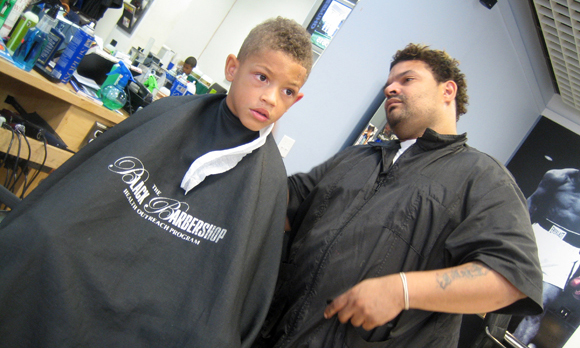
When I went over to Hyde Park Hair Salon—“Barack Obama’s barbershop”—I had the impression that barbershops were somehow exclusive, like country clubs that cost much less and provide haircuts instead of tee times. I think Ice Cube and the movie Barbershop gave me that idea.
A stereotypically awkward UChicago student, I thought I’d have nothing to say and would get odd looks from everyone in the place. But I learned quickly that this barbershop is nearly the opposite, where people can say as much or as little as they want, and the conversation goes on.
I spent most of my time chatting with barber Kris Golden, a laid-back Californian with a crazy hairstyle—half of his hair is short and black, while the other half is long and blond. He gave the short answer on why the guys in the shop can make anyone in the chair relaxed. “Barbers are social geniuses,” he said, because they must be able to talk to everyone who comes in. At $21 a cut, Hyde Park Hair Salon prides itself on providing a happy medium of average cost and high-quality haircuts, and the result is that the shop attracts a broad spectrum of clients.
“It doesn’t matter if you’re a police officer or firefighter or a street hustler or a politician. It’s all about equality when it comes to haircuts,” Golden said. In the couple of hours I spent in the shop Saturday morning, it showed. “You wouldn’t know it, but the guy over there is a chess master,” Golden said, pointing to an older gentleman sitting on the couches in back. A couple of chairs down sat a signed rap artist, and at the front of the shop was another U of C student.
The light but steady flow of customers was typical for a Saturday, which Golden said is the shop’s quietest day. It’s usually Thursday nights—deep enough into the week that clients have a good supply of stories and enough stress to tell them—that spark some more animated discussions branching from politics to women to sports to women. On Saturday the discussion skipped from lady troubles to the X-Games, which were playing on both of the shop’s flat-screen TVs. At one point the whole group shared a laugh over YouTube videos on one barber’s laptop.
For all the chatter, Golden said all of the social skills are ultimately just part of the equation for the guys with the clippers. “Every guy in here is on top of his game,” he said. Some specialize in more conservative haircuts, while others—Golden included—are partial to flashy designs and graphics. The group takes its profession seriously, especially with clientele that includes the commander-in-chief.
The shop displays Obama’s chair at the front of the store along with his portrait, and tours continually drop by for a look. But even those who have grown accustomed to Obama-mania in Hyde Park can stop by the shop for a chat and a haircut.
Jake Grubman, '11
RELATED READING:
RELATED MEDIA:
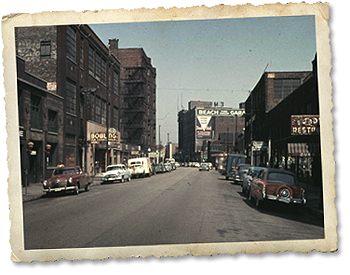 As the microphone was passed to him, a dapper Joe Marlin, AM’54, AM’60, slowly stood up and looked out at the audience.
As the microphone was passed to him, a dapper Joe Marlin, AM’54, AM’60, slowly stood up and looked out at the audience.
“I’d like to start out with an apology,” he said. “I moved to Hyde Park in 1953. So I can’t tell you all old stories about the neighborhood.”
“I feel like a baby,” another man said later. “I came here in 1961.”
Look who’s talking. On Saturday this 21-year-old intern went to the Blackstone Library on 49th Street and Lake Park Avenue. The day’s event was fitting for the Chicago Public Library’s oldest branch: the “Hyde Park-Kenwood Stories,” a gathering for sharing neighborhood memories.
They weren’t kidding around—save for a few folks, I was the youngest person in the library’s basement auditorium by 50 to 60 years. Feeling a touch out of place, I secured a seat in a back corner and waited for the storytelling to begin.
Head librarian Lala Rodgers told the 40 or so guests that each speaker would get only five minutes, pointing to a trusty helper with a timer and a sign that said “Wrap It Up!” in big, bold letters. Alas, the gray-haired woman left in charge of this timekeeping never could master the stopwatch, and it beeped unpredictably throughout the whole two hours. We never saw that warning sign again.
But who needed it anyway? The stories were fascinating. One man told of living next door to Al Capone’s brother. Another woman told of working in the old Rosenwald mansion. Someone shared a cocktail glass from the original Morton’s Restaurant at 56th Street and Lake Shore Drive, and remembered the exact day he swiped it—June 6, 1964.
Who knew that the intersection where Ratner Athletics Center now stands used to be the site of the Frolic Theater? Or that 55th Street was a main drag filled with clubs, bars, and lounges? Or that streetcars used to take locals close to the lakefront in the summertime, and that the Jackson Park lagoon offered boat rentals for 25 cents?
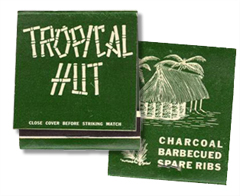 The most touching moment came when Arlene Rubin asked the group to shout out their favorite defunct Hyde Park location. Their faces lit up, each mention bringing a new swell of smiles and cheerful side conversations. The Tropical Hut! Kiddie Kicks shoe store! The Eagle Pub! Wimpy’s! The Bee Hive Lounge!
The most touching moment came when Arlene Rubin asked the group to shout out their favorite defunct Hyde Park location. Their faces lit up, each mention bringing a new swell of smiles and cheerful side conversations. The Tropical Hut! Kiddie Kicks shoe store! The Eagle Pub! Wimpy’s! The Bee Hive Lounge!
I listened in amazement at how much of their beloved neighborhood they had outlasted and how unwavering their love for Hyde Park was despite the changes.
No one could master the microphone. People complained they couldn’t hear. There were a few arguments over specific dates and locations. But in all, the gathering was a welcome trip back in time.
Afterward, caught up in the moment, I climbed the stairs to the library’s first floor. I reached the top and was instantly bumped by a baggy-clothed teenager, his eyes fixed on his iPod instead of me in front of him. The spell broke.
Luke Fiedler, ’10
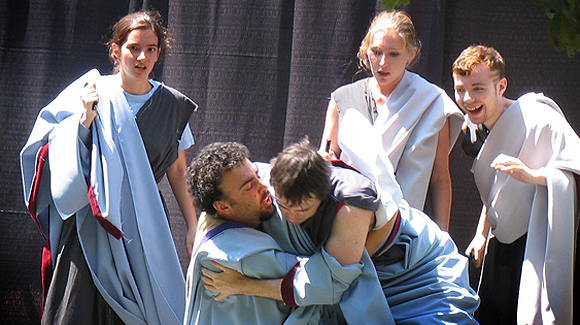
I have to think patrons at the Globe would have appreciated Shakespeare’s work even more had they seen his plays on free-milkshake day.
The shakes flowed freely—at least to the first 150 people—at Wednesday’s Shakes and Shakespeare event, with the C-Shop providing the goodies and the Dean’s Men providing the entertainment. A few dozen people watched the troupe’s abridged depiction of Julius Caesar through the first three acts, though we’ll have to wait until next week for the conclusion (warning: lots of impaling).
It was the first of four Shakes and Shakespeare events—part of the summer’s Bartlett Break Days series—with the Dean’s Men presenting Antony and Cleopatra in two parts later this month. The supply of free shakes lasted until well after the show started, but supplies will be limited if a bigger crowd shows up next week to watch Cassius meet his maker.
An informal affair, the play took place on a small stage at the north end of Bartlett Quad, where a student from ORCSA handed out the milkshake vouchers. I wandered between Einstein Bagels and the quad a few times before finding him at the back of the audience, but the strawberry-whipped-cream-Oreo goodness was worth the journey, and I still got a good view of Caesar’s demise.
Jake Grubman, ’11
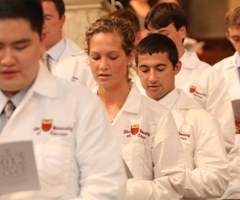 Someone needed to check the pulse of each new Pritzker School of Medicine student last Saturday. Although Rockefeller Chapel felt like a sauna, and despite the challenging road of medical school ahead of them, each of the 88 inductees appeared eerily cool and collected. Or maybe it was those clean, white doctor coats they had just received.
Someone needed to check the pulse of each new Pritzker School of Medicine student last Saturday. Although Rockefeller Chapel felt like a sauna, and despite the challenging road of medical school ahead of them, each of the 88 inductees appeared eerily cool and collected. Or maybe it was those clean, white doctor coats they had just received.
Controlled excitement filled the air at the annual white-coat ceremony, formally marking each first-year student’s entry into the profession. The event began at Pritzker 19 years ago and has since become a tradition at nearly every medical school in the country, although at many of those schools, the ceremony marks students’ transition from classes to clinical training. After Funmi Olopade, associate dean for global health and professor of medicine and human genetics, delivered the keynote address, each student was called forward to don the familiar white uniform for the first time.
An otherwise quiet and meticulous ceremony was occasionally enlivened by a nearly botched exchange between the coat’s recipient and the two people presenting it, resulting in a few smiles and sighs from the students as they returned to their seats, straightening out their jackets on the way. But the heat seemed to affect the intimate crowd of family and friends more than the students. The onlookers were proud but uncomfortable: A mother clicked photographs in one hand while fanning herself with the other. A father slowly gravitated toward one of the chapel’s many open doors. A baby impatiently waddled through the pews.
Nevertheless, as the newly clad Pritzker inductees faced the crowd to recite the Hippocratic Oath, it was clear that it would take more than an awkward coat exchange or a muggy Saturday afternoon to sway these students. They looked ready.
Luke Fiedler, ’10
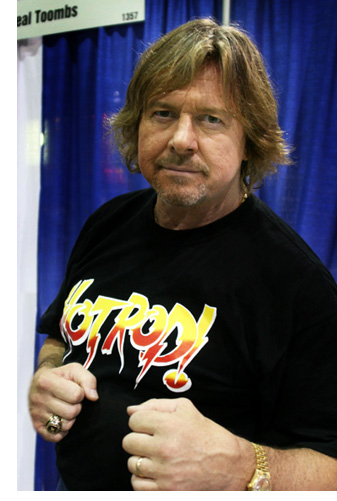 I’m next in line, and I’m absolutely shaking with nerves.
I’m next in line, and I’m absolutely shaking with nerves.
On the other side of the table is former professional wrestler “Rowdy” Roddy Piper, whose easy smile shows how far away his days of smashing opponents with steel chairs are. We’re at the Wizard World Chicago Comic-Con, and as I step up to the table to have him sign a magazine featuring his likeness, I can’t help but think about how nerdy I must look.
Piper stands up and greets me with a handshake—pro wrestlers are always so kind—and then sits back down to sign. “I don’t know what I was thinking there,” he says, looking at the crazed eyes and kilted costume that defined his character in the 1980s. I tell him that I met him once at a book signing when I was 12 years old and that I wrote a book report on his autobiography (because that’ll really make me sound intelligent). He just smiles, presumably because no true fan can ever think of anything to say when they actually get up to the table, and says, “Well you’ve grown up good despite me.” Small talk with a former champ is never easy.
That’s the memory I’ll take with me from this year’s convention, which attracted tens of thousands of comic book enthusiasts over the weekend. The name Comic-Con can hardly be considered binding: The convention is part flea market, part conference, part art exhibit, and part autograph signing. A friend and I walked the main hall of the Donald E. Stephens Convention Center for hours on Sunday, where we saw dozens of people dressed up as storm troopers, hundreds of young comic-book artists hoping to get their work noticed, and thousands of Marvel Universe action figures. I don’t even want to guess the number of comics for sale. And then there was the line stretching across the hall of people waiting to get Ernie Hudson’s autograph (Hudson, by the way, played Winston Zeddemore in Ghostbusters, and if you already knew his character’s last name, you probably should have been at the convention with me).
B-list celebrities have always had a presence at the convention, but several true comic enthusiasts grumbled over the absence of important comic-book figures like Marvel and DC. Neither company had a booth at the convention, meaning less contact with the industry’s elite and more room for autograph signings with Todd Bridges and Michelle Rodriguez.
By the end of the day, my feet were sore and my wallet was empty, but I was a few autographs and a few comics richer. Since I had volunteered for part of the convention, I was allowed to take away some convention leftovers, and I briefly considered taking Hudson’s placard. I thought better of it, though—people might have thought I was a nerd.
Jake Grubman, ’11
Photo courtesy of Iron Ming
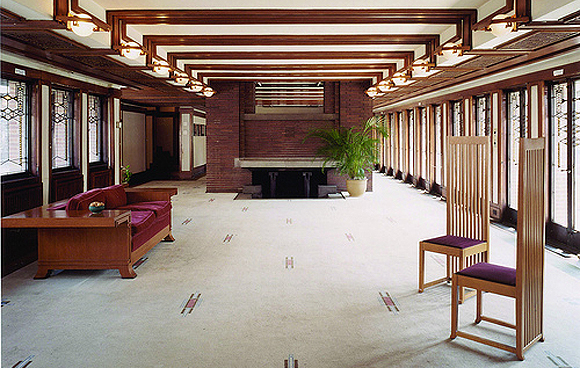
At the corner of 58th and Woodlawn, Frank Lloyd Wright’s Robie House looks a little like a boat, functions a little like a fortress, and continues to impress visitors with its innovation a century after its construction.
I stopped in for tea with the Robies last week, but since they weren’t there—and apparently haven’t been for almost 100 years—I settled for the new Private Spaces tour, a 90-minute walk-through that features the same stops as the normal tour but also allows access to the third-floor bedroom level, the kitchen, and the servants’ wing.
I’m no architecture buff, but the tour’s discussion of the house’s functionality was fascinating. Frederick Robie, a bicycle manufacturer and father of two small children, wanted his house to be safe from unwanted visitors, and Wright’s design allowed for both safety and interaction with the outside neighborhood. The house’s 174 art-glass windows are one example of how Wright separated the Robies from passersby: one cannot see through the windows from the outside, but those on the inside have a fine view of the house’s surroundings.
In several parts of the tour, our guide explained how the house actually connected the family with nature even while protecting them from people outside. That’s particularly clear in one of the “private” sections of the house, the upstairs bedrooms, where the windows open out onto the planters on the balcony and the trees beyond them. I’d be inclined to think of the master bedroom as a tree house if it weren’t a piece of one the most architecturally influential houses in the country.
Restoration efforts are ongoing, though even unfinished areas like the billiard room were interesting—there we learned that Robie House was once a Theological Seminary dorm. If you’d rather wait until more of the house is finished, the Frank Lloyd Wright Preservation Trust has added a number of other programs, such as After Hours, a cocktail get-together at the house, and LEGO architects, where aspiring architects can build model designs.
Jake Grubman, ’11
Photo courtesy of Smart Destinations
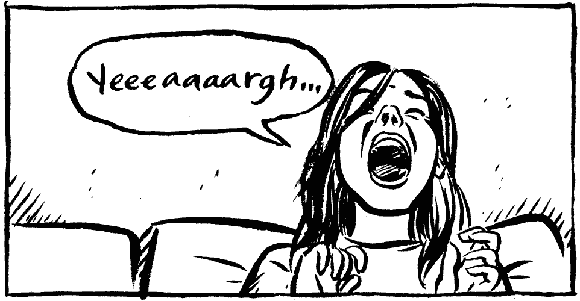
As an English major, in class I’m often drawn to something I find just as fascinating as a discussion of a good book: watching other people interact. So when I heard about the most recent Gapers Block GB Book Club meeting, I jumped at the opportunity to go—not for the literature, but for the theatrics.
The selected book was quite good: La Perdida, a graphic novel by former Magazine contributor Jessica Abel, AB’91. It tells the story of Carla, a young American who travels to Mexico City in search of her Mexican roots and a fresh start. She crashes with a former boyfriend, Harry, who claims to be pursuing his literary dreams but instead drinks heavily and isolates himself from local culture. Carla soaks in as much of the city as she can—including meeting a few friends who lead her past the tourist traps and into a more complicated, dangerous relationship with the city.
But none of that mattered to me last week at the North Side bookstore The Book Cellar, as I cautiously sat down among the book-club members. Without a class grade hanging over me, I was more focused on the characters sitting next to me than Abel’s characters.
Two things distinguished the meeting from the rigorous UChicago classroom. First, a few people were cradling wine glasses. Plus, people provided refreshingly personal responses to the story, weaving their own lives into the fabric of the discussion. One woman used Carla’s bold decision to leave America as a way to express regret over not traveling more when she was younger. Another reminisced on the awkwardness of progressing from a foreign-language textbook to conversing with a native. Another attacked Carla’s dubious decision-making from the perspective of a concerned mother.
Despite the differences between the book club and the classroom, one annoying (and amusing) similarity remained—a “that kid.” Every U of C student can give a hall-of-fame story about the one person in class who, whether justified or not, irritatingly dominates the discussion while also providing suppressed chuckles and hidden smiles for everyone else. Although, in this case, the “that kid” was “that woman.”
She couldn’t let more than two other comments pass without adding her own. She answered questions with a bit too much self-assurance and talked just long enough for your mind to slip into its post-workday haze. But most fun to watch was her discomfort whenever someone else’s remarks provoked a hearty nodding of heads. You could see her desire to dominate, and she fought to never be upstaged—not that anyone else was keeping score.
In all, the discussion—and the people watching—was definitely worth the ride up to the North Side. Besides, you can’t bring wine to a U of C English class.
Luke Fiedler, ’10
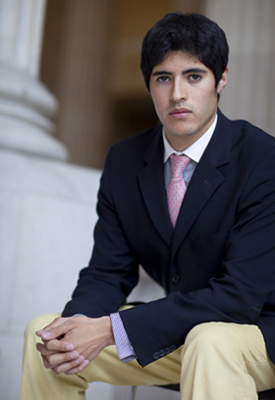 In July the influential Washington, DC, newspaper the Hill released its annual “50 Most Beautiful” list of striking staffers and cute congressmen. This year Chicago’s own Carl Loof, AB’08, made the cut, winning over the paper—which received more than 320 nominations—and his colleagues with his international charm and intellectual curiosity. The 25-year-old legislative aide, dubbed “The Cosmopolitan,” was born in Bogotá to a Swedish family and raised in London and Boca Raton, Florida. The rigorous reputation of the U of C attracted him to Hyde Park as a transfer student, and he graduated with a political-science degree and also studied regionalism and European Union politics at Sciences Po in Paris. And here’s the best part, ladies: if you’re smitten, you can meet Loof when he hosts the DC Phoenixphest on September 24.
In July the influential Washington, DC, newspaper the Hill released its annual “50 Most Beautiful” list of striking staffers and cute congressmen. This year Chicago’s own Carl Loof, AB’08, made the cut, winning over the paper—which received more than 320 nominations—and his colleagues with his international charm and intellectual curiosity. The 25-year-old legislative aide, dubbed “The Cosmopolitan,” was born in Bogotá to a Swedish family and raised in London and Boca Raton, Florida. The rigorous reputation of the U of C attracted him to Hyde Park as a transfer student, and he graduated with a political-science degree and also studied regionalism and European Union politics at Sciences Po in Paris. And here’s the best part, ladies: if you’re smitten, you can meet Loof when he hosts the DC Phoenixphest on September 24.
How did you find out that you were named to the Hill's 50 Most Beautiful People of 2009? What was your initial reaction?
I received a phone call to set up an interview and photo. A voice on the other end asked me if I was familiar with the “Top 50,” so I naturally assumed that the reporter meant the Maroon soccer team's unofficial mascot. The Hill has the largest circulation of any Capitol Hill publication and is a great source of political news, so to be honest with you, initially I was really very surprised, honored, and humbled by the distraction—I mean distinction—then went back to work.
What has the reaction been among coworkers, friends, and family?
I never knew so many people read the Hill until that article! Throughout the week, I got smiles and thumbs-up around work. I received a lot of calls, texts, and e-mails from friends, many of whom did not know I had moved to Washington, DC. People even tweeted about me. So it was a nice opportunity to connect with some friends I haven't spoken to in months. My mum is very excited to share the news with as many people as she can, and my dad thinks it is great but mostly is just glad that I have a job.
Besides impressing Capitol Hill with your dark, good looks, what does the day-to-day life of a legislative aide entail?
I don’t think people are too impressed. I handle a wide variety of legislative issues for a member of Congress, including health-care reform, education, trade, foreign policy, transportation, immigration, civil rights, and homeland security. I attend briefings, sit in on Congressional hearings, read journals/reports, and prepare memos. I [attend] meetings on behalf of the representative with groups that hope to highlight certain legislation or raise awareness about issues. I then review pertinent legislation and make recommendations. A lot of my job involves developing close relationships with colleagues in other offices and understanding others' perspectives and where there is room for cooperation. It has been a great experience.
You have Swedish roots and have lived Florida, London, and Paris. What is it about American politics that appeals to you?
It’s the dedication and passion. People here really care about politics and the character of elected officials on a level that I have not seen in other countries. One need only look at DC internships or campaigns to realize just how involved and engaged young Americans of all backgrounds are in their political system—so much so that they forgo an entire summer of gainful employment in order to work for free.
In America people really want you to take part in society and succeed. Americans are a far warmer and more open people than many might credit, and this transpires in our political system. Even individuals with weird backgrounds and funny names are given the opportunity to achieve greatness, but once elected, public servants are held to a very high standard of expectations.
Now that we have a U of C–affiliated president of the United States, who do you think could be the next Maroon in the White House?
At Chicago I was a member of the Psi Upsilon fraternity, an organization that can already count two U.S. presidents and two Supreme Court justices, including John Paul Stevens, U-High’37, AB’41. The fraternity was a big part of my decision to go into public service, and I believe it and the mentality of the University of Chicago help aspiring, young politicos understand that being a part of a community means to contribute, to respect others, and to champion the public good over glory. Among the more politically oriented gentlemen I have known is Nicholas G. Rodman, AB’09, a gifted and dedicated student patriot whose parents have both served our country with distinguished careers in public service. That said, the University does a good job of preparing many fine young men and women who take active civic leadership very seriously.
Elizabeth Chan
 When Ryan McCarl, AB’08, AM’08, graduated last year, he knew his education was far from over—and not just because he’s pursuing an MA in education at the University of Michigan. McCarl, a promoter of self-education through several blogs and an upcoming book, recently spoke with UChiBLOGo’s Jake Grubman, ’11, via e-mail to discuss education outside of the classroom.
When Ryan McCarl, AB’08, AM’08, graduated last year, he knew his education was far from over—and not just because he’s pursuing an MA in education at the University of Michigan. McCarl, a promoter of self-education through several blogs and an upcoming book, recently spoke with UChiBLOGo’s Jake Grubman, ’11, via e-mail to discuss education outside of the classroom.
What is self-education, and why is it so important?
Self-educators are curious about the world and willing to do something about their curiosity. They open themselves to learning opportunities wherever they occur, and they understand that education is a lifelong endeavor. It is absurd to think of our education as complete when we obtain a diploma, a slip of paper; education is about growth and self-actualization, about deepening our understanding of the world and the human situation. No degree or collection of degrees ought to give us the illusion that our education is complete or that we need not bother with learning any more.
To some people, “self-education” might be a scary term because of all the work involved in formal education. What’s the fun side?
There is a major difference between pursuing a topic because you are curious about it and completing homework for a class you have to take in order to earn a credential. Suppose you are curious about politics, and your initial encounter with the excitement of current events and political participation leads you to read better news sources, take part in a demonstration, research a policy debate, and wade into political philosophy. The material you encounter is interesting, the process of discovery is exciting, and, above all, the people you meet and the conversations you have can be very rewarding.
Your blog Wide Awake Minds is also part of the work you’re doing for a book by the same name; which came first, the blog idea or the book idea?
The book idea came first. I’ve been working on it on and off for the past two years, and I decided that a good way to get the book written and out the door would be to make a public commitment to writing it and to get others involved with the project by conducting interviews with other self-educators and sharing their stories and advice. The response so far has been fantastic, and it has strengthened my belief in the idea’s importance.
What Web sites or other tools would you suggest for those interested in exploring self-education?
The Internet has an infinite wealth of resources for self-educators. I recommend familiarizing yourself with RSS feeds and using a feed reader to read the best news sources and blogs you can find in your areas of interest. I also recommend trying the podcasts put out by NPR and the New Yorker. I especially like Garrison Keillor’s The Writer’s Almanac.
It’s also important to understand the limitations of the Internet and the continuing importance of offline educational experiences. I am a firm believer in the virtue of reading good books. And if you want to increase your knowledge of the world, you could do worse than regularly reading the New York Times and the Economist.
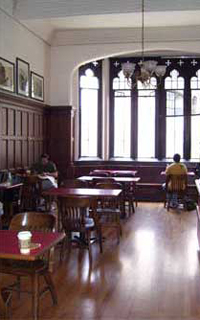 In my experience, there are certain groups that are simply not worth antagonizing. So: don’t try to pet wild animals. Don’t mouth off to police officers. Don’t flash hand signals at gang members. And don’t try to take coffee away from English majors.
In my experience, there are certain groups that are simply not worth antagonizing. So: don’t try to pet wild animals. Don’t mouth off to police officers. Don’t flash hand signals at gang members. And don’t try to take coffee away from English majors.
And yet last month (perhaps on a dare) the Humanities Division proposed to convert the back room of Classics Café into a seminar room. True, there would still be coffee. But the larger of the two rooms—the sun-lit, south-facing Gothic space that overlooks the Midway—would be closed.
Almost immediately, an Internet petition went up. Interestingly, it was posted not by furious undergraduates, most of whom are away for the summer, but by two senior faculty members: David Wellbery, the LeRoy T. and Margaret Deffenbaugh Carlson University professor; and Eric Santner, Philip and Ida Romberg professor in modern Germanic studies and chair of Germanic studies. In language typical of the café’s patrons, the petition states that Classics Café is “a physiognomy expressive of unique features of our academic culture” and “a Socratic space,” while closing the back room would “eviscerate a singular milieu of humanistic conversation.”
But don’t professors who hold named chairs have other ways of making their dissatisfaction known? “It’s not a scream of the powerless,” says Wellbery, pointing out that because the petition is online, it’s been signed by a number of alumni. “It was meant to be helpful in the decision-making process,” by demonstrating just how many people—792 had signed it by August 24 at 1 p.m.—love the café.
OK, but what’s a Socratic space? “In the dialogues of Plato, Socrates would leave the city and go to a special, quiet place,” Wellbery explains. “That’s where the dialogues take place. Socratic dialogues really set the pattern for learning in the humanities. Classics Café is just that kind of space, a space for teaching and learning.”
While the vast majority of the signatories (which reads like a Who’s Who of the Humanities Division) contributed only their names, those who wanted to could make further arguments in the comments section. Among grad students, pragmatism was a common theme. “Forget ‘utopian space,’” wrote Hannah McKeown, “it's the philosophy grad-office space! Either keep the café or build us offices.” Less crankily, Rocio Magaña, pointed out, “It's impossible to estimate how many dissertation topics have been conceived and brought to fruition in this place.”
Among the professors, several acknowledged the politics of the issue. “Being a professor in the linguistics department, I fully understand the need for more and better seminar space,” Jason Riggle wrote, “and I would love to have such space so close to my office. *BUT*, eliminating the open room of the Classics Café is absolutely the wrong way to go about this.” Herman Sinaiko added, “Don't damage the whole Division just to placate a departmental need.”
There were also critiques of the petition’s language: “I do not regard the back room of the Classics Café in quite the same light (‘utopian,’ a ‘singular milieu’) as my fellow signers, nor would I express those beliefs with such prolixity if I held them,” Jonathan Williams commented, “but nonetheless I feel quite strongly that the University gains more from that space as it stands than as a lecture hall.”
Still others opted for brevity: “Is nothing sacred?” “Worst idea ever,” “SAVE THE CAFÉ!” “'adamantly’ isn't strong enough,” “Leave my coffee alone!!!!!!!!!!!” “Please!!” while someone named Mr. Anonymous wrote plaintively, “Save [C]lassics....because it saved me first.”
*****
According to the Dean of the Humanities’ office, the decision to close the back room of the café has been put on hold.
Carrie Golus, AB'91, AM'93
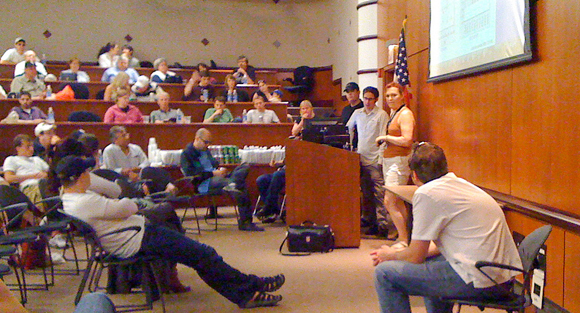
Nate Silver, AB’00, has become somewhat of a champion for University of Chicago nerds everywhere, turning an economics degree into a career in baseball-statistics analysis and then a hugely popular political blog, fivethirtyeight.com. But for all his success, nobody ever called him immodest.
“I’m kind of an idiot when it comes to baseball,” the stats guru and White Sox fan said early in his talk at U.S. Cellular Field Sunday. He said that because he hasn’t focused all of his energies on the game this season, but I still have to think he’d destroy me in fantasy baseball. Silver and Christina Kahrl, AB’90, were in town for part of the Alumni Association’s fourth-annual event with Baseball Prospectus (BP), the baseball stats and history think tank Kahrl cofounded. Taking place in the Cell’s Conference and Learning Center, the talk was complete with PowerPoint charts and graphs—a day at the park only the U of C could sponsor.
Silver, who worked for BP until earlier this year, and Kahrl had some guidelines on statistical analysis in general, like valuing quality over quantity in data collection and actively avoiding optimism bias. They used specific examples to explain BP’s PECOTA system, which Silver created to forecast players’ careers, going into some of BP’s successes (see the Cubs’ Milton Bradley) and failures (see the Baltimore Orioles’ Matt Wieters). They had good news for the Sox fans in the room, praising the South Siders’ minor-league system and, in Kahrl’s case, predicting a first-place finish in the American League Central Division, though that might be the optimism talking.
To demonstrate BP’s strategy for comparing past and present players, Silver broke out the MS Paint—not a very good replacement for a whiteboard to explain multidimensional vectors. Still, White Sox faithful now have at least some empirical evidence that Gordon Beckham could be a Hall of Famer.
The presentation lasted until the start of the game, which saw the Orioles beat the Sox 3–2. Sunny skies and comfortable temperatures made up for the expensive food (that churro was hardly worth $14), and even this Cubs fan did all right at the Cell. Oh, and that guy at the end of the row, the one talking all those numbers? Not quite the idiot he said he was.
Jake Grubman, ’11
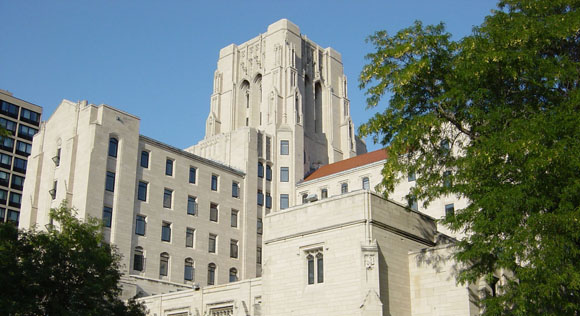
We all know about Robie House. We’ve all seen the Museum of Science and Industry, if only while zooming past it on Lake Shore Drive. But after meandering through the streets of Hyde Park with the Chicago Architecture Foundation this past weekend, I couldn’t help but ask myself: who knew Hyde Park had so much hidden architectural history?
About 20 people gathered in front of Rockefeller Chapel on a glorious Sunday afternoon to take part in a neighborhood tour and unearth the stories behind buildings I’d walked by hundreds of times but never stopped to appreciate. Embarrassing, I know. Docent Dinah Wayne led a perfectly paced tour, never stretching the group out for more than a five-minute walk between stops. Wayne touched on Hyde Park’s role during the 1893 World’s Columbian Exposition—the Midway served as the fair’s entertainment center, and the MSI was originally known as the Palace of Fine Arts.
She also provided factoids that an average resident might not know. The statue at the east end of the Midway, for instance, is of Thomas Masaryk, the founder and first president of Czechoslovakia. The placement isn’t random: Masaryk visited the University in 1902 and 1907, and taught a course in Czech history during the summer of 1902.
Some homes built around the turn of the century, when Frank Lloyd Wright designed Robie House, emphasized horizontality, while those made a few decades later, during the height of the Art Deco movement, emphasized verticality. The Robie House had longer, slimmer Roman bricks to conjure up images of the American prairie. Art Deco-style buildings, like International House, displayed unbroken vertical lines to make it seem taller and more impressive.
The tour shed light on a handful of beautiful homes that I had never seen before, but we didn’t venture out of the neighborhood’s southeast corner until the very end. We made our way to the edge of the quadrangles, only to head back south toward Chicago Booth (did you know that 40 percent of the building is underground?). I was curious about other blocks that we didn’t cover. And the U of C was underrepresented: while we briefly touched on I-House, the Lab Schools, Palevsky Residential Commons, and Chicago Booth, we never went west of University Avenue, and never farther north of 56th Street. One man in an Arizona cap asked why we weren’t seeing more of the campus. Wayne sighed and shrugged her shoulders. “It’s its own two-hour tour!”
Some were disappointed to learn that President Obama’s house was not featured during the two-hour session. He actually lives right across the Hyde Park border in Kenwood, which—you guessed it—has its own tour.
Luke Fiedler, ’10
It’s true that red meat can help make you healthy, but Red Red Meat can do something more: it can cure a stern case of the Mondays. At least, that’s what the bluesy alt-rock band did for me and a few hundred others this past Monday at a free concert in Millennium Park.
The concert was soothing and entertaining, but it was also significant for another reason—it was the last chance to see the group play. Bandleader Tim Rutili had recently said that they would be “retiring” after Monday’s show.
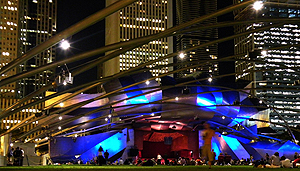 Well, make that re-retiring. Red Red Meat released its first single in 1991, and its last album came out 1997, before the quartet went its separate ways. Although the Chicago-based band hasn’t produced new material in more than a decade, interest in the group recently grew after its primary record label, the influential Sub Pop Records, re-released a deluxe edition of its most critically-acclaimed effort, 1995’s Bunny Gets Paid, which had been out of print for years.
Well, make that re-retiring. Red Red Meat released its first single in 1991, and its last album came out 1997, before the quartet went its separate ways. Although the Chicago-based band hasn’t produced new material in more than a decade, interest in the group recently grew after its primary record label, the influential Sub Pop Records, re-released a deluxe edition of its most critically-acclaimed effort, 1995’s Bunny Gets Paid, which had been out of print for years.
In support of that re-release, the band reunited to play a handful of shows culminating at Pritzker Pavilion on a clear, still Monday night. So why was I there? I wasn’t rocking out to Red Red Meat back when they were active, probably because by the time I hit double digits they had already broken up. No, I was there because of the band that came after Red Red Meat. Following the break-up a few band members, including Rutili, went on to found Califone, which, according to the blog Pitchfork Media, has “always been stupidly under appreciated, and the further we stumble into the 21st century, the more [its] music starts to feel both familiar and necessary.” I’m an enormous fan of Califone, and the chance to see a previous incarnation was enough to get me out to the park. That whole “free” thing didn’t hurt either.
Spectators dotted the grassy slope behind the half-full pavilion seats. Some brought wine; some brought full picnics. Others, strolling Michigan Avenue, heard the music and wandered in. It all created a vibe suited to Red Red Meat’s sound: sometimes loud, sometimes quiet, equal parts cohesive jam and scrappy, empty spaces.
Califone guitarist Jim Becker joined percussionist Ben Massarella, drummer Brian Deck, bassist Tim Hurley, and Rutili for a set that stretched just past one hour. And midway through the set, between songs, Deck quickly exited, returning moments later with his son, no more than six or seven years old. The boy took his position next to Massarella and his bag of noisemaking oddities, banging away for a few songs. His internal metronome, unmistakably on view in his gleeful head bobs, kept surprisingly good time. With a drumstick in one hand, the boy hit an extra floor tom, and used a shaker in the other, instantly establishing himself as the Coolest Little Kid Ever. The experience left me jealous of his inevitable rock-star status, relaxed after some great music, and ready for Tuesday.
Luke Fiedler, ’10
This page contains all entries posted to UChiBLOGo in August 2009. They are listed from oldest to newest.
July 2009 is the previous archive.
September 2009 is the next archive.
Many more can be found on the main index page or by looking through the archives.